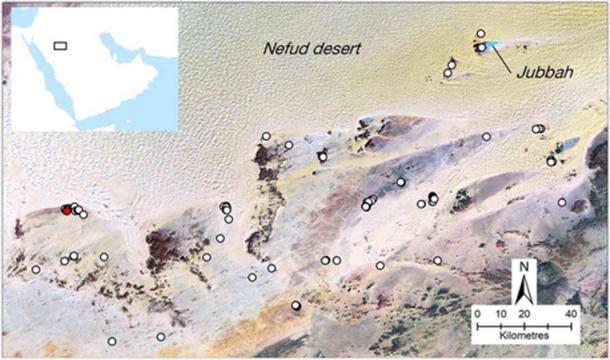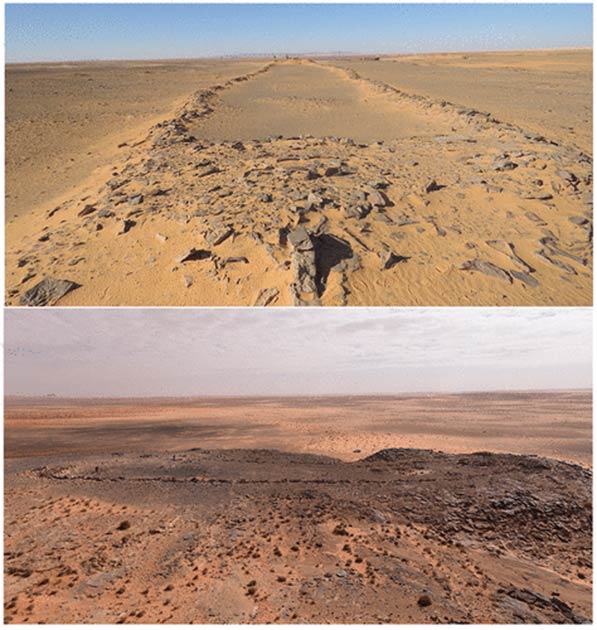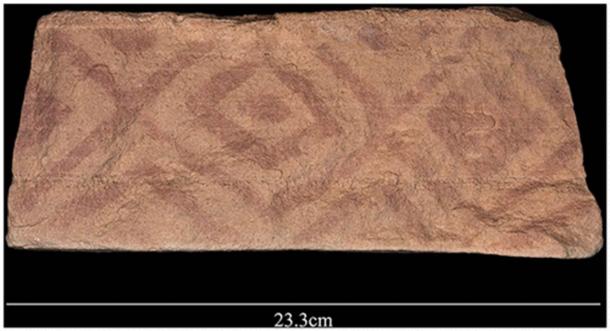The pre-Islamic history of Saudi Arabia has been little researched, and it is only in recent years that archaeologists have begun to investigate the country’s vast deserts. Experts have found over 100 mysterious stone structures that are among the oldest ever found, even older than the pyramids. For example, massive stone structures known as “kites,” probably used in mass animal hunts, have been identified. Moreover, a large number of stone geoglyphs have been found which are known to the local Bedouins as the “works of the old men” reports Ancient Origins . However, a new type of structure, known as a “mustatil,” is still being studied. Together, these newly discovered mysterious stone structures found in the deserts of Saudi Arabia are providing scientists with new insights into life in the ancient world during the transition from pastoral nomadic life to Neolithic society.
Mysterious Structures Found With Satellite Images
The enigmatic mustatil structures were first identified by a team that included specialists from the Max Planck Society in Germany, Saudi experts, and international scholars. They used high-resolution satellite images together with data from Google Earth to locate these structures. The focus of their study was the Nefud Desert in northern Saudi Arabia. To find these mysterious structures, researchers mapped the location of specific features and their proximity to local resources such as water. In total, some 104 mustatils have been found so far.

Location of the primary mustatils found in the northeast of Saudi Arabia (Groucutt et al. / The Holocene )
According to The Holocene , “They are elongated rectangles, with 102 out of 104 examples having two long walls, and the other two having three.” On average these mustatils are 480 feet long and 420 feet wide (161 and 142 m). They were made from thousands of tons of stone and rock, and typically had low platforms. And they were only found in low-lying areas near water resources in the northeastern part of Saudi Arabia.
The Mysterious Mustatils Are Older Than The Pyramids
Little material culture was found during field studies of the mustatil sites. Some items were carbon dated and it was found that at least one dated back 7000 years, making it older than the pyramids. The researchers wrote in The Holocene that “The vast scale of these structures makes them among the most spectacular examples of prehistoric monumental architecture anywhere in the world.”
Researchers tried to figure out why these structures were built. Their conclusions suggest that the mustatils were built in response to climatic and environmental change. The researchers wrote in The Holocene that “Between 10 and six thousand years ago the Arabian Peninsula saw the most recent of the ‘Green Arabia’ periods when increased rainfall transformed this generally arid region.” Therefore, these changes in the local environment likely led to the emergence of the Neolithic period in Arabia when local cultures were radically transformed.

Two of the mustatils found in the Nefud Desert (Groucutt et al. / The Holocene )
From A Brown Dry Desert World To A Green Arabia
Before the last Green Arabia period, nomadic pastoralists struggled to survive in the harsh desert-like environment of these areas. More rainfall turned parts of these area into grasslands, but the environment still remained challenging. This led to a reduction in nomadic life and possibly the establishment of territorial entities. The mustatils are probably related to these dramatic societal changes.
Researchers then sought to establish the function of these mysterious constructions in the desert. The walls are too low for them to be built for defensive purposes and they could not have been used for utilitarian reasons such as water storage. A large number of animal bones were unearthed at these sites. Also uncovered was “a painted rock on the interior aspect of a mustatil” the researchers wrote in The Holocene . The geometric images on this painted rock were the key to interpreting what the mustatils were built for. The researchers concluded that these mysterious stone structures had some symbolic or ritual purpose.
These Mysterious Stone Structures Were Likely Neolithic
Dr Huw Groucutt, one of the study’s lead researchers, stated that “Our interpretation of mustatils is that they were ritual sites, where groups of people met to perform some kind of currently unknown social activities,” according to the Max Planck Institute . The discovery of the painted stone sitting on a platform could suggest that rituals took place at these sites. Groucutt is also quoted by the Max Planck Institute as saying that “Perhaps they were sites of animal sacrifices or feasts.”

Geometric painted pattern found on a block that formed part of the platform of a mustatil. (Groucutt et al. / The Holocene )
Many of the mustatils are built relatively close together which could indicate that they were made by a distinct social group. The structures were likely constructed to promote social cohesion and perhaps to reaffirm group identity. This would indicate that the pastoralists who lived in this part of Arabia lived in complex societies, possibly in response to a better, greener environment.
Mustatils May Have Been Built As A Social Mechanism
However, surviving in these arid environment was still challenging, and the pastoralists faced many dangers. According to the Max Planck Institute , “The team hypothesizes that mustatils were built as a social mechanism to live in this challenging landscape.” They were probably were built to ensure that the ancient people who once lived here cooperated to survive and prosper.
While the mustatil structures are not the oldest in the world, they are the oldest in Arabia and some of the oldest ever recorded. They show how the environment can transform and shape human society. They also demonstrate that structures for ritual and social purposes help groups to come together and survive in harsh landscapes. It is expected that the deserts of Saudi Arabia will reveal more archaeological evidence in the future.
Top image: View along the length of a mustatil structure, note researchers at far end for scale. The image shows the character of these structures as two platforms connected by low walls. Source: Huw Groucutt / Max Planck Institute
By Ed Whelan
 RSS Feed
RSS Feed















 August 20th, 2020
August 20th, 2020  Awake Goy
Awake Goy  Posted in
Posted in  Tags:
Tags: 













